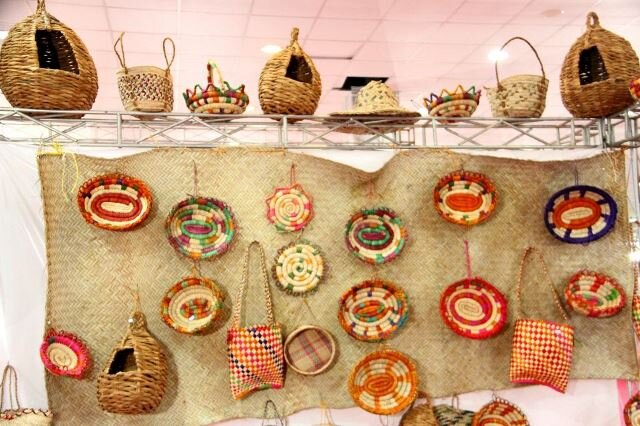Handicrafts exhibit opens in Bandar Abbas

TEHRAN –An exhibition of Iranian handicrafts and home-based businesses opened to the public in Bandar Abbas, southern Hormozgan province, on Tuesday.
There are 150 booths displaying products, goods, and services from the four main sectors of the food industry, handicrafts and traditional arts, clothing and textiles, and ancillary services, ISNA reported on Wednesday.
Creating handicrafts markets would increase production consequently, and this would increase employment rates, Hormozgan’s governor Mehdi Dusti stated during the opening ceremony.
There is a reduction in handicraft sales during summer because of the blistering climate of the territory and setting up such an exhibition could tackle the issue a bit, he added.
Bordering the Persian Gulf and the Gulf of Oman on the south and bounded by Bushehr and Fars provinces on the west and northwest, Kerman on the east and northeast, and Sistan-Baluchestan on the southeast, Hormozgan is widely renowned for having incredible culture and heritage, stunning sceneries, and above all its warm and hospitable people.
It embraces arrays of islands among which Kish, Hormuz, Hengam, and Qeshm are the most popular ones and top tourist destinations in the southernmost parts of the country.
Over the past couple of decades, the coral Kish Island has become a beach resort where visitors can swim, shop, and sample a laid-back and relatively liberated local lifestyle. It is home to free-trade-zone status, with ever-growing hotels, shopping centers, apartment blocks, and retail complexes.
Hormuz, which is mostly barren and hilly, is situated some eight kilometers off the coast of the Strait of Hormuz, which attracts many tourists by its colorful mountains, silver sand shores, and great local people.
Hengam Island has scenery rocky shores, serene sunset, and kind natives, which can attract travelers who enjoy a relaxing trip by spending time on this tranquil island.
Qeshm Island is a heaven for eco-tourists as it embraces wide-ranging attractions such as the Hara marine forests and about 60 villages dotted mostly across its rocky coastlines. The island also features geologically eye-catching canyons, hills, caves, and valleys, most of which are protected as part of the UNESCO-tagged Qeshm Island Geopark, itself a haven for nature-lovers.
Wide-ranging handicrafts
With 14 entries, Iran ranks first globally for the number of cities and villages registered by the World Crafts Council, as China with seven entries, Chile with four, and India with three ones come next. For instance, Shiraz is named a “world city of [diverse] handicrafts”, Malayer is a global hub for woodcarving and carved-wood furniture, while Zanjan has gained the title of a “world city of filigree”.
In addition, the ancient city of Shiraz has been chosen to host the 39th General Assembly of the World Crafts Council-Asia Pacific Region (WCC-APR) in May 2023. Shiraz has a remarkable amount of handicraft pioneers. With an average age of 70, some of these pioneers are still active at their workshops. The occupational records of about 100 pioneers are collected and are annually praised by the custodians of the WCC General Office.
Available data compiled by the Ministry of Cultural Heritage, Tourism, and Handicrafts suggests the value of Iran’s handicrafts exports stood at $120 million during the first eleven months of the past Iranian calendar year 1399 (March 20, 2020 – February 18, 2021), Mehr reported. The country’s handicrafts exports slumped during the mentioned months in comparison to the same period last a year earlier due to the damage the coronavirus pandemic has inflicted on global trade.
The Islamic Republic exported $427 million worth of handicrafts during the first eleven months of the calendar year 1398. Of the figure, some $190 million was earned via suitcase trade (allowed for customs-free and tax-free transfer) through 20 provinces, according to data compiled by the Ministry of Cultural Heritage, Tourism and Handicrafts. Ceramics, pottery vessels, handwoven cloths as well as personal ornamentations with precious and semi-precious gemstones are traditionally exported to Iraq, Afghanistan, Germany, the U.S., the UK, and other countries.
ABU/MG
Leave a Comment